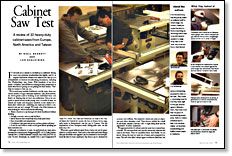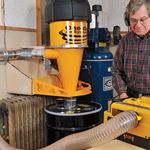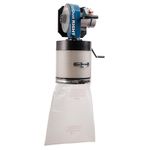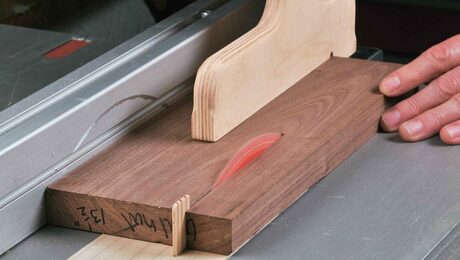Cabinet Saw Test
A review of 10 heavy-duty cabinet saws from Europe, North America and Taiwan
Synopsis: Niall Barrett and Lon Schleining team up to review cabinet saws, checking tabletops for flatness, arbor flanges for runout, fences for accuracy, and a giving each machine a once-over for safety. They looked at how difficult the saws were to assemble, and they evaluated power, noise, dust, and more. You’ll see the specs for each saw they inspected — blade size, blade tilt, fence, price, warranty, contact info for the manufacturer, along with notes from each evaluator. Schleining tells why he likes left-tilting saws, and both authors weigh in on service and parts. And they cite their favorites among all the saws they tested. Side information discusses two sliding tablesaws from Europe.
Few tools are as central to a workshop as a tablesaw. Buying one is not a decision woodworkers take lightly, and it’s no surprise that heated debates over cabinet saws take up a lot of bandwidth on Internet woodworking discussions, including Fine Woodworking’s own, Knots. With hundreds—if not thousands—of dollars’ price difference among models, people want to know what they’re getting (or not getting) for their money. That’s what we wanted to find out, too.
We’ve used many models of tablesaws over the years, from contractor models to larger industrial machines. Like all woodworkers, we’ve gotten used to working in our individual ways, and there’s no denying that we have our preferences. But as we prepared to spend several weeks poring over a roomful of saws, we cleared our heads and imagined ourselves in the market for a heavy-duty cabinet saw, something you trade up to when a contractor’s saw just isn’t enough. We made a list of the features we were looking for, which included the following:
- Plenty of power to rip through 8/4 thick hardwood without blinking
- A tough, accurate, easy-to-read rip fence
- Safety features that would help keep body parts intact
- Ease of assembly and adjustments
- Confidence that parts and service are but a phone call away
- A nice fit and finish to make us feel good about spending our hard-earned money.
Although we looked at 12 saws, we performed our most extensive tests on 10 cabinet saws: Bridgewood BW-12CS, Delta Unisaw, General 350-1, Grizzly Industrial G1023ZF, Inca 2200, Jet JTAS-10, Lobo TS-1010, Powermatic 66, Sunhill TAS-12 and Transpower/CP Tools TSC-10HK. The Delta and Powermatic are made in the United States; the General in Canada; the Inca in France (it was originally made in Switzerland); and the rest in Taiwan.
What sets a good tablesaw apart from a lesser one can be quantified to a certain extent. Parts such as the table and arbor flange (the part the blade rests against) can be measured to see how perfectly flat they’ve been machined. Rip fences can be checked for accuracy and stiffness. But subjective criteria also play an important part when choosing a tool. These factors include the overall fit and finish, whether a saw has a left- or right-tilting blade and the ergonomics of safety equipment.
From Fine Woodworking #136
For the full article, download the PDF below:
Fine Woodworking Recommended Products


Stanley Powerlock 16-ft. tape measure

Rockler Dust Right 650 CFM





















Log in or create an account to post a comment.
Sign up Log in